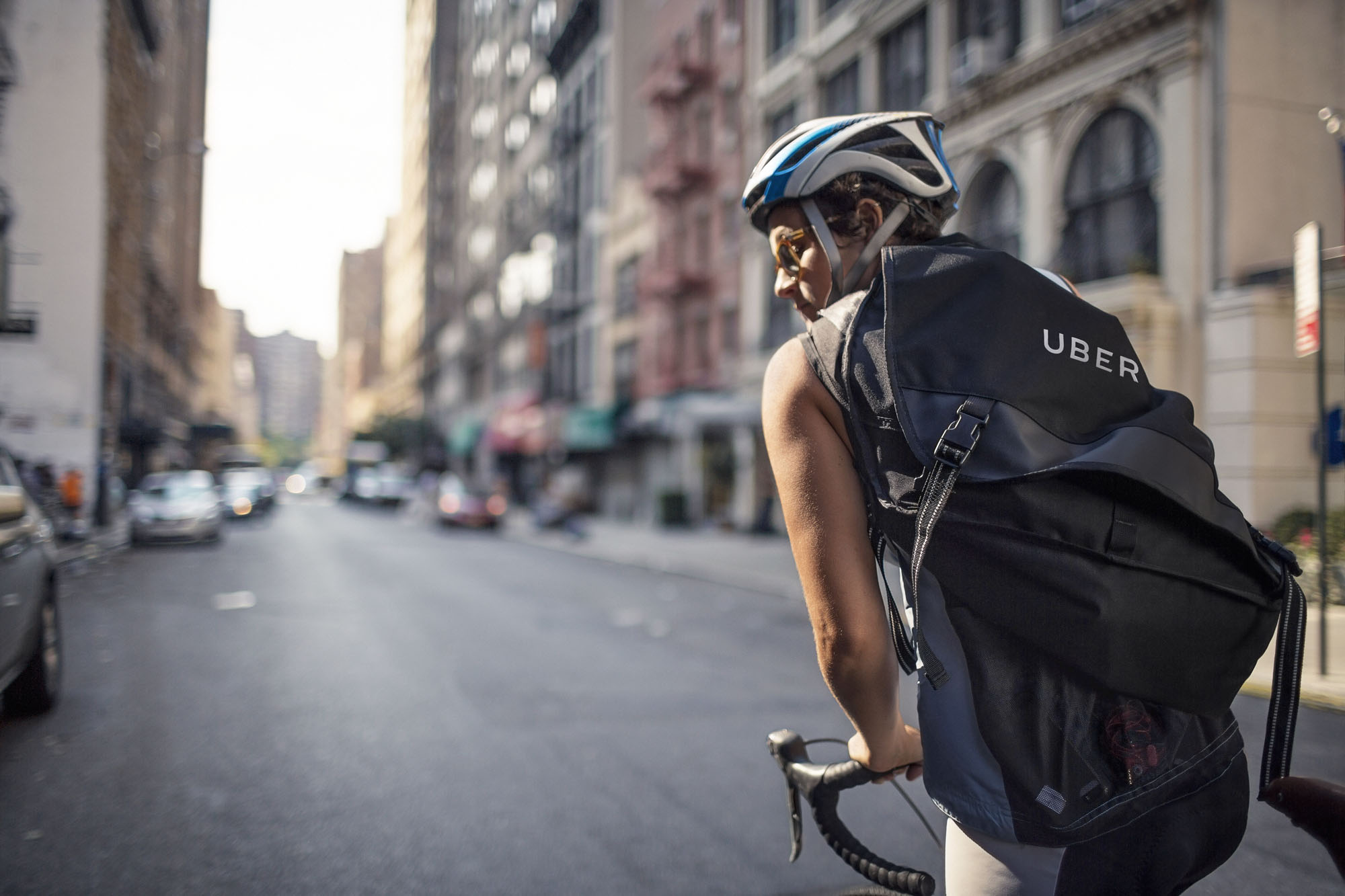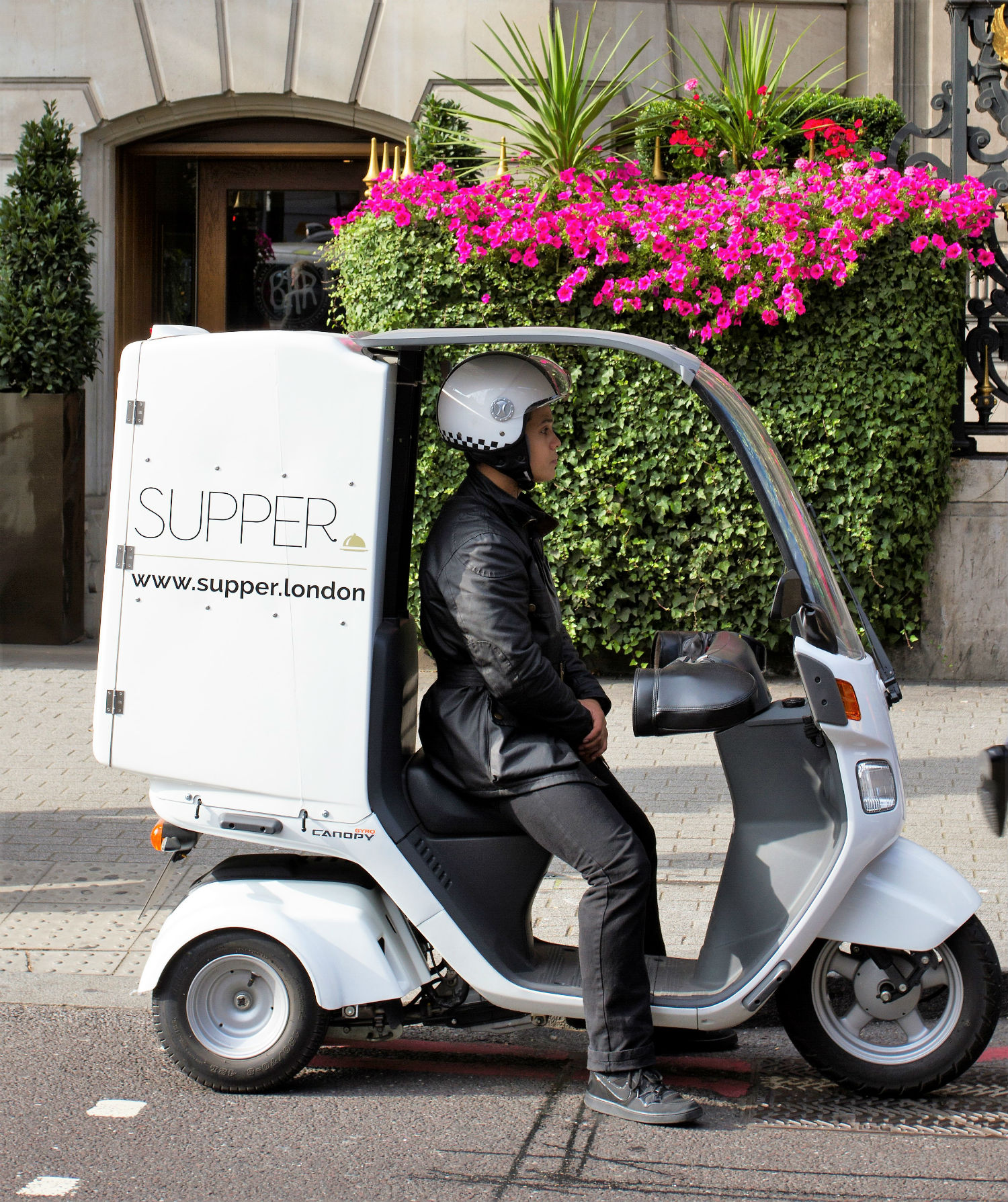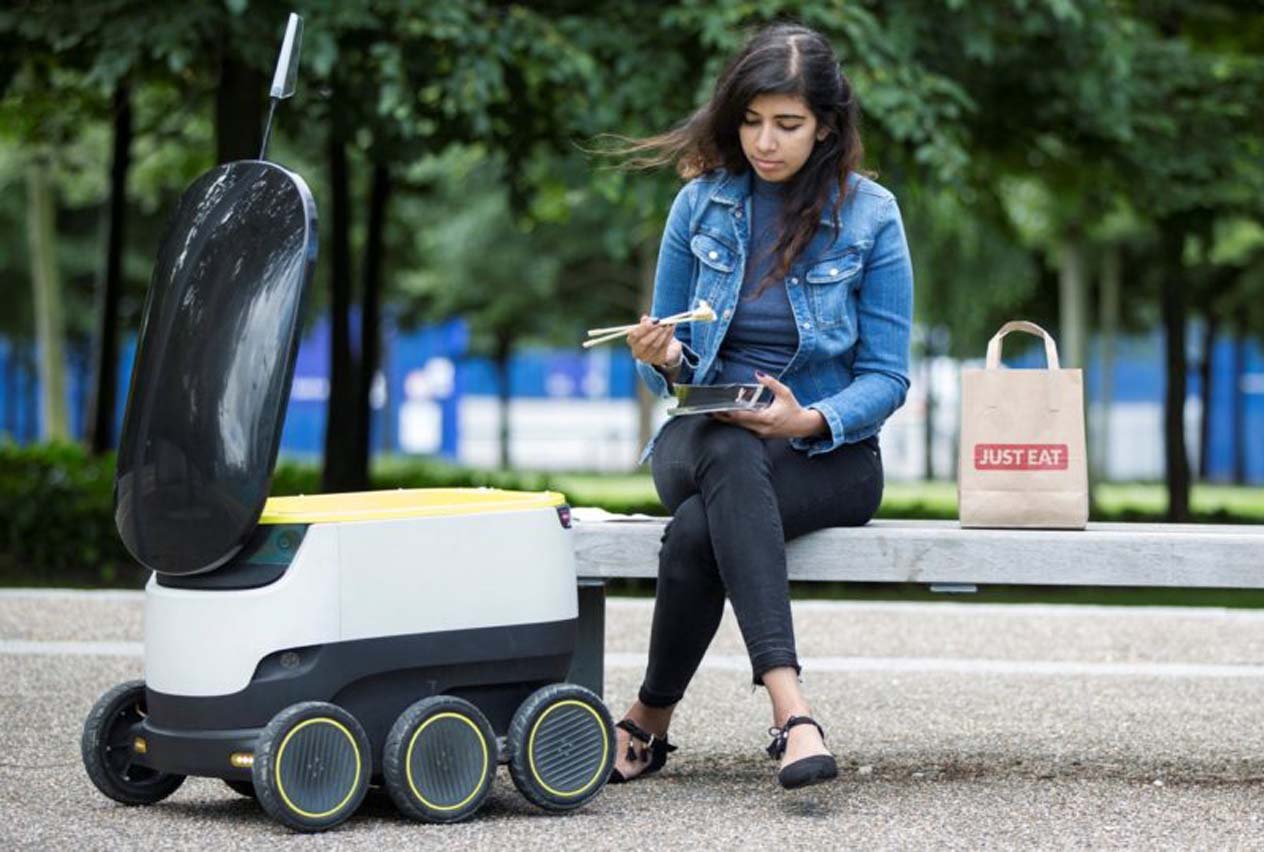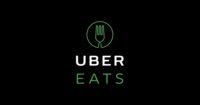Moveable feast: what you need to know to get your food on the move
Home delivery services are booming, but are they suitable for all types of cuisine? Katie Pathiaki looks at what the different providers are offering and asks what you need to know to get your food on the move.
Over the past few years, home delivery services have seen a sharp rise in popularity. According to analysts CGA Strategy, 26.6 million consumers have had food delivered at least once in the past six months, with 49% ordering home delivery at least weekly.
Catering for customers who want to eat in the comfort of their own home was made easier by the launch of Amazon Prime Now last year, Deliveroo in 2013 and UberEats in 2014. Although Just Eat was founded in 2001 and Hungry House in 2006, they didn't take off until a few years later - possibly due to the development in technology and the surge of app-based delivery services.
"People's lives are busier than ever," says John Upton, managing director of healthy fast food chain Leon. "Convenience, thanks to mobile phones and delivery expectations, is being quickly and totally redefined. Customers increasingly want their food brought to them, wherever they are, and they don't want to have to come to us in person."
It appears that millennials are the ones driving the rise in deliveries. CGA Strategy found that 63% of consumers under 35 order delivery at least weekly, compared to 41% aged between 35-54 and 29% of 35-54 year-olds.
Vladimir Martynov, co-founder of Honi Poké in Soho, London, has found that most of his deliveries go to time-poor office workers. "Regardless of their age, all our customers are short on time, don't want to queue and prefer pre-ordering," he says. "Takeaway and delivery are much simpler and work-friendly options."
Economies of scale
For customers, home delivery offers convenience, but it can also offer restaurants some advantages over their walk-in diners. "Restaurants are no longer constrained by the number of seats they have, so they are not limited in the number of meals they can sell. It also gives restaurants huge exposure in the app," says Mathieu Proust, general manager of UberEats.
French bakery brand Paul partners with UberEats in London and Birmingham. Kathryn Pretzel-Shiels, marketing director of Paul, says signing up with a delivery partner provides significant brand exposure. "Every time someone sees the Paul name pop up, it embeds Paul in their mind for future purchases," she explains. "It also expands customer awareness of what Paul offers to customers."
Over the past year, Upton has seen a 400% increase in weekly sales at Leon through the introduction of delivery. He says: "We can leverage know-how, scale and investment and it helps us grow our business and reach new customers. We partner with both Deliveroo and UberEats and they're both really keen to work with us, to share their insights, expertise and learnings, to help us deliver food for our customers."
Business benefits
By recruiting UberEats, Deliveroo or Supper, restaurants are given access to a bank of delivery drivers that don't have to be added to the payroll. Saiphin's Thai Kitchen, a delivery, takeaway and eat-in operation, launched last year under the Rosa's Thai Café and Lao Café chain. Three-quarters of Saiphin's Thai Kitchen's trade is through Deliveroo, while 25% comes from walk-ins.
Co-founder Alex Moore says that across the whole brand, sales are up 30% in the first year since introducing delivery. "We used to fiercely object to signing up with a delivery partner, but the hassle of managing our own drivers became too obtrusive," he says. "Our business is to focus on making delicious Thai food - not struggling with the logistics of delivery management."
Honi Poké has been working with a delivery partner since it launched four months ago and believes it has added an extra 30%-40% to sales. "Sales through the platform grow month-on-month and are outpacing our walk-in sales growth," Martynov says.
However, delivery partners charge restaurants a percentage of every order made. It's estimated that UberEats charges a 30% fee and so does Deliveroo. Amazon follows closely with 27.5%, while Supper charges up to 25%, depending on size and partnership structure. Just Eat charges the least, at 13%. All operators vary commission depending on a variety of factors, including frequency of orders.
Martynov thinks it's worth the risk. "It is much cheaper and quicker than trying to set up an in-house delivery system - you can set it up immediately and you don't have to manage your own drivers," he says. "Beyond logistics, you also gain access to your partner's customer database and marketing output. From a customer's perspective, the large delivery partners are an easier option - platforms such as Deliveroo and Uber practice due diligence and only list the best restaurants, so the quality is guaranteed to the consumer. As such, partnering with them gives the restaurant better credibility with the consumer."
On the road
A main concern for restaurants before signing up with delivery partners is the risk of tarnishing their reputation through the quality of the food when it arrives at the customer's door. Once the food has left the building, the chefs have no control over what condition it arrives in. According to CGA Strategy, 35% of consumers believe the quality of delivery food is worse compared to dining in outlets and that delivery does compromise the overall quality of a meal.
Anneke Gilke, co-founder of healthy café Squirrel in South Kensington, works with Deliveroo and says delivery accounts for 25% of sales. She says she had many lengthy conversations with Deliveroo before she started working with the company, mainly around maintaining the quality of food while in transit.
"We were reassured through the fact that Deliveroo will not deliver outside of a two-mile radius of Squirrel, meaning that the delivery times are short and therefore the quality of the food when it arrives with the customer will be the same as it was in the restaurant," she says.
But how do delivery companies guarantee the food will arrive hot and unscathed? Supper has invested thousands of pounds in how it transports food. It starts with the drivers, who are trained about the restaurants Supper works with, the chefs, the correct way to transport food and how to interact with the customers, too. The equipment on the bikes keeps the food hot or cold, depending on the product.
Peter Georgiou, chief executive of Supper, says: "Ultimately, we're in control of the entire delivery process, from the moment the food is picked up until it's delivered, and we take responsibility for that. As the drivers all work for Supper, they're accountable."
UberEats guarantees that customers will receive their food within half an hour, which puts extra pressure on the drivers.
"Delivery is new for many of our restaurant partners, so there can be initial concerns -however, these are quickly dispelled when they give the app a try," Proust explains. "Because we partner with local restaurants, the food doesn't have to travel very far. We also provide thermal bags and the food is packaged in such a way that it arrives as intended. For larger items such as pizza, we provide large courier boxes so they can be carried flat."
The other main concern restaurateurs have is a question of who owns the customer?
"If a customer is unhappy with the food, it is the restaurant they blame. Equally, if they are happy with us, it is not the delivery partner who gets the praise - however, they are a great enabler," Pretzel-Shiels says.
"The delivery partner captures all the ordering data and is able to manage future communications, but the restaurant can also communicate with the consumer via marketing materials in the delivery packaging to drive spend directly to the restaurant."
Before signing Rosa's Thai up with Deliveroo, Moore had some concerns about not being able to build a direct relationship with the customer or about owning their data. He says that after taking the leap, solid performance and good customer feedback has gone a long way toward allaying those fears.
"Delivery isn't for everyone, but for the right type of cuisine, it can add a significant extra revenue stream. If you are going to take the plunge, try to maintain ownership of the customer by maintaining your own delivery service through a third party," Moore says.
To overcome this objective, Squirrel places individual feedback cards with contact details inside every Deliveroo order so that the customer has a direct line back to the restaurant if they have any issues. "Ultimately, it is our responsibility to make sure that our product is of an extremely high quality and well-packaged before it leaves our store," Gilke explains.
Dream machines
The future of delivery is exciting. With constant developments in technology, the way that food is ordered is constantly changing. This year, LG launched foodnfilm, a new way to order takeaway food through your TV. The system is available on the Signature OLED TV and on all TVs with the LG webOS operating system. It allows customers to view takeaway menus in full HD, track their orders in real-time, and to add a film to their food order to watch after it is delivered.
The way that food arrives at your door is also coming along in leaps and bounds. At the end of 2016, Just Eat developed the world's first self-driving delivery robot. Made in partnership with Starship Technologies (the founder of Skype) the robots travel to the restaurants, the chef places the food in the cargo hold, and then it makes its way to a customer up to a mile away.
"The customer won't settle for a cold pizza or burger and the current players will all have to raise their game," Georgiou says. "I can't see drones or robots taking over any time soon - they sound like great ideas, but in practice, I don't think they quite work. I don't think they will take over human delivery in my lifetime."
It's anticipated that most restaurants will soon start to operate off-site, with non-customer-facing kitchens dedicated to delivery orders. CGA Strategy forecasts a 39% rise in delivery-only sites in 2017. Deliveroo kick-started this trend with the launch of Deliveroo Edition in April, which allows a restaurant to begin trading without actually owning a bricks-and-mortar restaurant.
According to CGA Strategy, third-party delivery services are set to thrive in 2017, increasing by over 54%. Pretzel-Shiels trialled with UberEats before signing up for a long-term partnership. She says: "You need to weigh up the benefits versus the cost of the margin you lose due to payment to the delivery partner. Determine what needs to be gained in incremental sales, and give some consideration to how it would affect your existing customer experience through your original site."
"Delivery is here to stay," says Upton. "Technology is changing the world, and you'd be mad not to change along with it."
The major players
Just Eat is available in Australia, Brazil, Canada, Denmark, France, Ireland, Italy, Mexico, Norway, New Zealand, Spain, Switzerland and the UK. Last year it processed £2.5b worth of orders and gained 4.2 million net new customers.
Hungry House launched in 2006. Today it works with more than 11,000 restaurant partners in 78 cities across the UK. However, the difference with Hungry House is that the restaurants are responsible for their own deliveries, as the directory does not offer its own delivery service.
Globally, over 40,000 restaurants are partnered with UberEats. To use UberEats, customers must download the app. When the order is ready, a nearby Uber partner in a car, bike or moped will pick it up from the restaurant and deliver to the customer. Customers are able to track the order's progress in real time on a map.
Deliveroo Founded in 2013 by William Shu and Greg Orlowski, Deliveroo works with over 20,000 restaurants in 130 cities around the world. Last year it reported a 650% rise in worldwide sales. Deliveroo has its own team of drivers, called Roowomen and Roomen, who aim to get the food to the customer
in 30 minutes or less.
Supper currently has 45 restaurants signed up to its delivery service and a customer base of over 10,000, which is growing at 25% month-on-month. The catchment area is north of the River Thames, from Pimlico to Marylebone, and from Kensington to Clerkenwell.
Amazon Restaurants launched in September 2016, offering Prime members in 66 London postcodes food from more than 400 restaurants. To order a delivery, you have to be an Amazon Prime member. Customers can place orders and track the status of their delivery in real time. Amazon Prime Now guarantees that the food will be delivered in an hour or less.



















